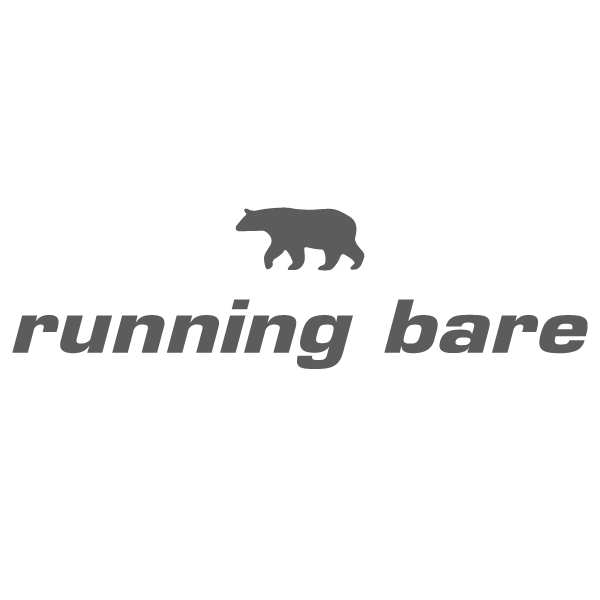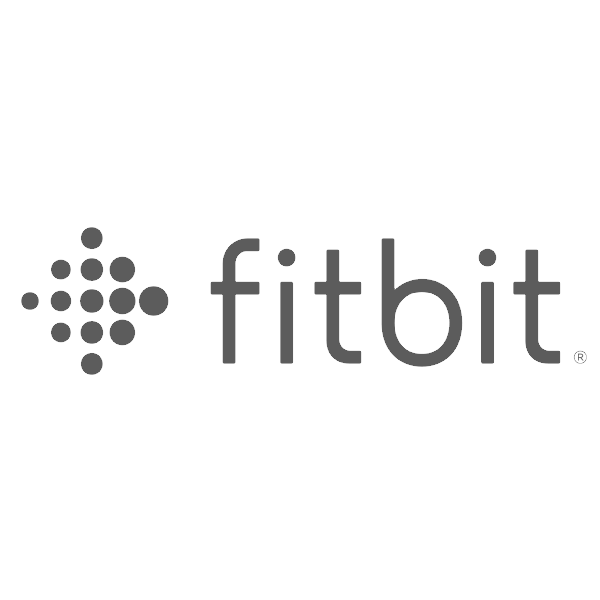7 Tips For Running A Sub 90 Half Marathon

I started 2017 with the goal of joining the 'sub-90 club' (running a half marathon in less than 90 minutes), as well as breaking the elusive sub-three hour marathon.
I'm still in training for my first full marathon on the Gold Coast in July, however, I ran the Canberra Half Marathon on the weekend and much to my delight ticked off the first goal of the year, the sub 90 half marathon! I did this off the back of a pretty interrupted marathon training schedule and off a moderate level of general fitness, having picked up two injuries in the second half of last year that prevented me from running most of 2016.
By all measures I'm an average runner (not beginner but certainly not advanced) yet I was able to achieve the sub-90 half milestone, so it's my hope that by sharing these half marathon preparation and training tips, I can help/inspire other average runners or weekend warriors like me to go sub-90.
The following are a few things I learned from my race that you may be able to apply to your next half:
1. Variation in training
2. Solid pre-race nutrition & hydration
3. Stay near the start line & line up early for the start
4. Wear comfy socks & compression & broken in running shoes - nothing new!
5. Use a GPS running watch for real time data
6. Run the inside lines of the course - I ran an extra 3-400m - error!
7. Have a race strategy
1. Training - the one thing you must do (besides turn up and run on race day)
My preparation for this half marathon was disjointed for a number of reasons:
1. I was sick with a pretty bad gastro bug which cost me 5 training days,
2. My two year old was sick which meant extra care and cost me another 3 training days,
3. My two year old later had an operation which cost me another couple of days training.
Despite these hiccups to the my training program, I was able to push through and largely stay on track. When life gets in the way of your training program, it's so easy to be thrown completely off course, lose momentum and not get back on track. Regardless of what life throws at you, if you want to achieve your running goal, you need to work hard to get back on track.
Here is a summary of my training preparation for the six months leading up to the race:

Weekly half marathon training program
Each training week I tried to stick to the following format. It worked for me but you may find something else works better for you.

Easy/steady runs in between long runs, hill sprints and speed sessions - designed to increase your endurance and keep you fresh but not push you too hard so that you can complete the harder sessions on the following days.
Speed sessions - consisting of a combination of hard, longer intervals (e.g. 4x1.6km at 4:00/km pace or 7x1km at 3:45/km pace) and Parkrun Saturdays running flat stick most of the way, as well as sprinting at futsal (indoor soccer) on Monday nights. These sessions are designed to engage and further develop the anaerobic system, to increase your overall speed.
Hill sprints - lung busters / bastards of sessions they are designed to break you (kidding). Hill sprints are designed to increase leg muscle strength and lung capacity.
Long run Sunday - most of the time this was at a comfortable, lower heart rate and pace - I use my heart rate monitor to keep my heart rate in the range of 135-145bpm. Why? Training in this range engages and further develops your aerobic capacity (as opposed to your anaerobic capacity).
2. Nutrition & hydration
I believe some of my success on the weekend is attributable to my approach towards nutrition. When I talk generally about 'nutrition' I'm referring to training hydration and recovery, pre-race hydration and carbohydrate loading and mid-race hydration and glycogen replenishment.
I'll be the first to admit that I take a fairly unsophisticated approach to training nutrition. I try to get what I need into the body to stay hydrated before and during a workout and then I try to recover as quickly as I can. I know I can be more scientific about it but I'm still learning and this stage, near enough is good enough for me (and proved good enough to break 90 minutes).
Here's how I bluntly approached a vague hydration & nutrition training plan:
Hydration
- Drink roughly 2-2.5 litres of water a day, most of the time I achieved this during my training;
- Sip roughly 250ml of electrolyte around 30-60 minutes prior to exercising
Carbohydrate
I should've consumed more carbohydrates prior to my training sessions, I didn't and I think it was partly responsible for fatiguing legs on the 3rd/4th day of running in a row. I didn't really have a carbohydrate plan so just tried to have oats (porridge) for breakfast, wholemeal bread for lunch and a side of rice or pasta or potatoes with dinner... clearly room for improvement here!
Post-training recovery
Protein for muscle repair was the main focus. I've since learned I'm taking too much protein in and not enough carbs. I should be aiming for a ratio of 4:1 carbs:protein. I used to sink roughly 35-40g of protein post-training and the remainder of my electrolyte drink. Again, lots of room for improvement here...
Pre-race nutrition:
3-4 days before the race
I started upping my carbohydrate intake 3-4 days before the race. Your muscles and liver store glycogen when you carbohydrate load and glycogen is the fuel your body uses when running. Once you deplete your stores of glycogen, the body then turns to other sources such as fat and muscle to fuel your race. Hence the need to stockpile glycogen pre-race. My preference for carbs was oats with honey, wholemeal toast with peanut butter and honey and bananas for breakfast, two sandwiches of wholemeal bread with tuna, tomato and cheese for lunch, snacking on almonds and vanilla yoghurt throughout the day and then larger amounts of pasta (typically spaghetti bolognese), white potatoes and brown rice with veggies in the evenings. I was of course focussing on increasing my water consumption combined with salt intake for retention of that additional water.
1-2 days before the race
In addition to my increased carbohydrate intake throughout days 3 and 4 leading up to the half, a couple of days out from the race the carb ante was upped by supplementing my meals and snacks with some energy bars (I didn't mind the taste of the Winners Energy Bar which you can get at Woolworths). On the hydration front I continued the increased water consumption (circa 2-2.5 litres per day) and started sipping a sports drink (my preference was Gatorade but most will do the job) to increase the electrolytes in my body, especially the level of sodium, necessary to top up my cell composition for optimal race day hydration.
Race day:
The race started at 7:45am so not overly early but early enough that my alarm was set for 5:15am and thankfully too because some muppet in the hotel set off the fire alarm, presumably another half marathoner who burnt their breakfast! I was aiming to eat breakfast 2.5 hours out from the race. Eating the morning of the race is crucial for having enough energy for the race, however, you have to be careful how much you eat and what you consume if you want to avoid serious stomach issues such as runners belly that can really upset your race and your crack at sub-90. Everyone's body is different and really you should be testing on training days which foods agree with your stomach and which foods don't as the old adage of 'nothing new on race day' applies particularly to race day food!
My pre-race breakfast
5:15am - Banana
5:25am - English Muffin plain (because I didn't have honey or peanut butter on hand, if I did I would've added those spreads)
5:45am - Two pouches of honey oats with skim milk (skim milk because it's easier for me to stomach - some runners avoid dairy like the plague on race day)
6:00am - Vanilla yoghurt tub
6:45am - Carbohydrate bar
7:15am - Peak Performance Chocolate Bar
5:30-7:15am - sipping a sports drink and water
7:15am-7:45am - very small sips of sports drink
7:45am - race start
Some runners like to consume a hydration gel right before the start of the race, however, this run I was testing how I felt and performed without a pre-race gel. I have tried a pre-run gel during training, however, I find the taste very sweet when I have more than one gel in a training session.
Nutrition and hydration during the race:
My preference is to only consume one gel during the half marathon because if I have more than one gel the taste for me is too sickly sweet. If it was a longer race I would of course consume multiple gels during the race. I take the gel when I start feeling a little heavier in the legs, a little depleted. I hit this mark around the 45-50 minute mark of the race and popped a caffeinated gel (Science in Sport Double Espresso Gel was my preference) which I stored in the handy Nike Running Waistband Belt. I always take a water chaser with the gel as it aids in speedy delivery of the gel. To achieve this, I pull the gel out of my Nike Running Waistband Belt and have it in my hand ready to be ripped open and consumed on approach to a drink station. As soon as I spot an upcoming drink station I will consume the gel knowing I have water to follow shortly after. This is my ideal scenario. Of course if I'm feeling depleted and there's no drink station in sight, I'll hit the gel and hang out for the next drink station to appear. The recommendation is not to wash down sports drink with a gel, it can provide too much of a sugar hit delivered at once, potentially causing stomach discomfort. I experienced this a few times during training and learned this the hard way, cutting my training short and running for the toilet.
During the half marathon I ran into two drink stations and took a small amount of water on board. I'm not very practiced at consuming water from the paper cups whilst on the run - I think I need to slow down more but I'm very much a momentum runner and like to keep my current pace up, so at the first drink station I ended up splashing most of the water on my face and drinking only a little and then the second drink station I squeezed the cup more and ever so slightly slowed down to drink more water. Ideally I would've consumed more water and more electrolyte during the race as I felt quite thirsty by the finish line.
3. Stay close to the start and line up early
Stay close to the start
There is a lot to think about on race day - getting into all your gear, not forgetting anything crucial for your race like your safety pins for your bib, your bib itself, your heart rate monitor, bandaids for your heels and/or nipples, sunscreen, a hat, your gels and all the while making sure you're eating and drinking properly whilst natural race day anxiety is increasing as you get closer to the start time.
We stayed at the Burbery Hotel in Canberra, an easy 10-15 minute walk/jog to the race which provided a nice little warm up before stretching near the start line. Crucially, if you don't like going to the toilet in the portaloos at the race, by staying in a hotel close to the start line, you can do what you need to do right before you leave to head to the start line and if you're staying close enough you shouldn't need to go again till after the race.
Staying close to the start of the race also allows you to do a reccie of where the start will take place, if you need to familiarise yourself with the location, especially if it's the first time you've run that particular race, like it was for me in Canberra.
Line up for the start early
A major error I made on the morning of the race was not getting into the starting 'chute' and towards the front of the start early enough. I was too distracted, busy taking photos for our social media - see our race day on Facebook / Instagram / Twitter - and too busy overstretching and generally mucking around because I was starting to get nervous/anxious. Consequently, I wound up in the starting chute about 2/3rds of the way from the start line, meaning there were thousands of half marathon runners ahead of me and this caused a MAJOR bottleneck for the first 1-2km. Instead of running my first kilometre in 4:15/20, I ran a 4:50+ and had to duck and weave through the traffic of runners, at time jumping up on the curb to get by, it was a disaster of a start to my race.
In hindsight this could have been avoided if I was at the starting chute warmed up and lined up early, towards the front so that I could make as clean a getaway as possible and get settled into my average race pace early. The other downside of a start that is significantly slower than average race pace is that for the first 5-7km I was constantly looking out for the 90 minute pacer and getting a little anxious after a few kms when I couldn't spot him on the course yet. I felt like I'd fallen significantly behind and had a lot of work to catch up. This anxiety could've been avoided if I started near him and stayed with him from the start.
Finally, if it's a Sunday race and you have the time, I'd arrive Friday night and settle into your surroundings, get your gear sorted etc on the Saturday so you aren't feeling rushed to get ready.
4. Wear comfy socks, compression & running shoes
Running socks
The one piece of running gear that I tried for the first time on race day (yes I broke my own rule!) was a pair of 2XU Compression Performance Socks. Previously I had trained with 2XU Calf Sleeves and a pair of New Balance ankle socks, however, I thought I'd try out the 2XU Compression Performance Socks and I'm very glad I did.
The 2XU Men's Compression Performance Sock felt plush around the toe area, nice and supportive across the arch of the foot and around the top of the foot thanks to a specially designed elasticated section and nice and secure from the ankle right up to just below the knee. The compression race socks never felt like they were going to fall down due to an elasticated top band that acts like a garter. The 2XU sock breathed extremely well but kept me warm at the start line also which was handy given the temp was close to singlet digits.
Compression
I trained regularly in compression shorts (and even wear them when I play futsal with Onsport FC on Monday nights) so I wanted to race in my men's 2XU compression shorts to keep my quads and hamstrings warm and compressed to aid blood flow and assist my performance during the run. I also like to race in short 3 inch run shorts, however, I don't like the 'exposed' feeling that run shorts give me, so call me conservative but I like to wear the 2XU compression shorts under my race shorts to feel a little more 'secure' on the day.
Running shoes
I had clocked about 200km in my New Balance running shoes when I raced and they felt great the entire race. Buying shoes in the week leading up to the race is generally considered a 'no no' as your body needs time to get used to the new shoes and break them in a little. One exception may be if you're buying the exact same style as you were training in.
Friends of mine who are much more experienced runners run half and full marathons in racing flats, such as the Saucony Kinvara or the Mizuno Hitogami, which differ to their standard training shoes (mostly they have a lower heel profile/drop, however, after purchasing these racing flats, they slowly introduce them into their training regime, to allow their tendons and muscles to adjust and get used to the different feel of running in a racing flat.
I personally am not at that level so my training shoe is currently my racing shoe, the New Balance 860. I have two pairs of the same shoe so I can rotate them each run and for some reason I have recently taken to swapping in a left or right shoe from one pair into the other pair to 'rotate' them like you would tyres on a car or a mattress on a bed. It's highly unnecessary and probably a little unusual!
5. Use a GPS Running Watch
When it comes to running and sport I'm a bit of a control/detail freak so having real time data during a race and data post-race that I can analyse is important to me. A GPS running watch with heart rate monitor I find to be an invaluable racing and training tool.
I ran the Canberra Half Marathon with a Garmin Forerunner because it allowed me to see at a glance, on just two screens, the key pieces of data that I needed to monitor my race progress, including:
Screen 1:
Pace - the current running pace (top of screen)
Average Pace - my average pace across the race (bottom of screen)
Time - total race time (left of screen) - arguably only useful towards the end of the race
Distance - total race distance run
The two most valuable pieces of real time information during the race were average pace (making sure my overall pace stayed below the sub-90 pace) and distance (knowing how far in I was and how far there was to go!).
Screen 2:
Cadence - as my aim is to turn over the legs at 178 steps per minute
Heart rate - more to keep an eye on how hard I'm pushing cardiovascular-wise
Data review:
Here is a summary of my most important race data:


6. Run the inside most line of the course
It sounds basic but running the inside of the corners on the course means you'll run the shortest distance on race day. This may not be practical where the course is crowded. I finished up running 21.41km in the half, an extra 0.31m (!) which, at an average pace of 4:07/km added over a minute to my time. Disaster!
Next time I race I'll be doing my best to stick to the 'racing line' to ensure I complete the course in the shortest possible distance run. Zig-zagging in between runners at the start like I did is not recommended either, it just adds distance and burns energy!
7. Half Marathon Race Strategy
A final word on race strategy. I ran a fairly consistent pace, trying to stay under my target average pace and that worked for me this run. A previous half marathon I unintentionally ran a negative split race (my pace continued to increase during the race). It's a personal preference based on how you like to run. The takeaway is to try to avoid burning up all of your glycogen stores early by going hard out of the blocks - this is so easy to do when you're pumped up on the start line ready to rumble! In some respects a slightly slower than target average race pace for the first km allows you to warm up a little and settle into the race if you haven't had a great pre-race warm up.
Follow these half marathon training and racing tips and you'll be on your way to joining the sub-90 club! Most of all, whatever you do and regardless of your time, make sure you have fun!

If you're a beginner runner, you may also like our post 9 Super Easy Running Tips For Beginner Runners.
Do you have any half marathon specific training or racing tips? If so, please share them in the comments below!
Happy running!
// Andrew Kidd
View all posts from this personal Marathon Training blog series.
Get social with us!
Follow onsport.com.au on Facebook: facebook.com/onsport.com.au
Follow us on Instagram: @onsportcomau
Follow us on YouTube: http://www.youtube.com/c/OnsportAu





























































































